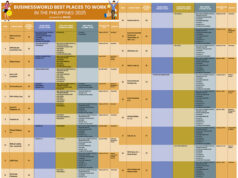Though it is necessary in all roads, buildings and cityscapes, cement is often overlooked in its importance. It is the binding agent which is vital in the construction of buildings, in the handling of water and sewage, and it is used in basketball courts, on roofs, stairs, pavements, tunnels and even lamp posts. Essentially, the modern, urban lifestyle, at least here in the Philippines, is impossible without it.
For all cement’s versatility and ubiquity, very little is widely known about it. For instance, the fact that this modern engineering substance is not very modern at all.
History of cement
Of course, refined products today are very different, but cement has been present in one form or another since the dawn of human civilization. A substance called bitumen was used for cementation purposes by the ancient Babylonians and Assyrians to bind together burnt brick or alabaster slabs. In Greece, the Minoans of Crete used crushed potshards as an artificial pozzolan to make hydraulic cement.
The Romans utilized crushed volcanic ash mixed with lime or else powdered brick or pottery to create wonders like the dome of the Pantheon in Rome and the massive Baths of Caracalla, many of which are still standing to this day. Humanity then continued to refine and experiment with hydraulic cement until the technical knowledge for making it was formalized by French and British engineers in the 18th century. Portland cement, the most common type of cement in general use around the world as a basic ingredient of concrete, mortar, stucco and non-speciality grout, was then developed in England in the 19th century.
What it is made of
Technically speaking, cement generally refers to a very fine powdery substance chiefly made up of limestone (calcium), sand or clay (silicon), bauxite (aluminum) and iron ore, and may include shells, chalk, marl, shale, clay, blast furnace slag, slate.
According to civil engineering Web site Civil Today, cement is classified into two kinds based on the way it is set and hardened: hydraulic cement, which hardens due to the addition of water; and non-hydraulic cement, which is hardened by carbonation with the carbon present in the air, so it cannot be used underwater.
“Cement is an integral part of the urban infrastructure. It is used to make concrete as well as mortar, and to secure the infrastructure by binding the building blocks. Concrete is made of cement, water, sand, and gravel mixed in definite proportions, whereas mortar consists of cement, water, and lime aggregate,” Civil Today wrote.
“These are both used to bind rocks, stones, bricks and other building units, fill or seal any gaps, and to make decorative patterns. Cement mixed with water silicates and aluminates, making a water repellant hardened mass that is used for water-proofing.”
How it is made
The Portland Cement Association (PCA), a policy, research, education, and market intelligence organization serving the United States’ cement manufacturers, wrote extensively on the manufacture and application of cement.
The most common way to manufacture portland cement, according to PCA, is through a dry method that involves several stages. “The first crushing reduces the rock to a maximum size of about six inches. The rock then goes to secondary crushers or hammer mills for reduction to about three inches or smaller,” the organization wrote on its Web site.
“The crushed rock is combined with other ingredients such as iron ore or fly ash and ground, mixed, and fed to a cement kiln.”
Kilns are a type of oven that can heat all the ingredients to about 2,700 degrees Fahrenheit in huge cylindrical steel rotary chambers lined with special firebrick. The PCA noted that kilns used for the calcination of crushed rock are frequently as much as 12 feet in diameter — large enough to accommodate an automobile and longer in many instances than the height of a 40-story building. The large cylinders used for this process are mounted with the axis inclined slightly from the horizontal and are called rotary kilns.
The finely ground raw material or the slurry is fed into the higher end of the cylinder, while the lower end is subjected to an intense blast of flame, produced by precisely controlled burning of powdered coal, oil, alternative fuels, or gas under forced draft.
“As the material moves through the kiln, certain elements are driven off in the form of gases. The remaining elements unite to form a new substance called clinker. Clinker comes out of the kiln as grey balls, about the size of marbles,” the PCA wrote.
Red-hot from the kiln, the clinker is then brought down to handling temperature in various types of coolers. The heated air from the coolers is returned to the kilns, a process that saves fuel and increases burning efficiency.
“After the clinker is cooled, cement plants grind it and mix it with small amounts of gypsum and limestone. Cement is so fine that 1 pound of cement contains 150 billion grains. The cement is now ready for transport to ready-mix concrete companies to be used in a variety of construction projects,” the PCA said. — Bjorn Biel M. Beltran



